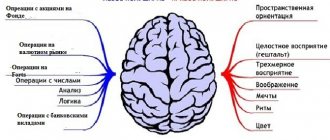Causes of tantrums in children
Hysteria is a state of intense agitation, which is accompanied by sudden changes in mood, outbursts of anger and despair, as well as loss of self-control. Children in hysterics may scream, cry, fall to the floor, bang their fists and even bang their heads against the wall. It is difficult for a small child to get out of this state on his own, so hysteria can last for quite a long time. What are the causes of tantrums in children?
- Overwork and overexcitement. Kids can get tired of both monotonous activities (long trips, intellectual work) and emotionally intense events (trips to entertainment centers, active and noisy games with peers, visiting a new place for the baby). If a child is tired, the likelihood of a tantrum increases significantly.
- Physical discomfort: pain, hunger and thirst, stuffiness, overheating, and so on.
- Inability to describe your requirement in words. Young children often have conflicts and misunderstandings with peers due to the fact that they cannot yet express their desires in words. Adults also do not always understand what a baby wants, who cannot yet or is just learning to speak. Misunderstanding on the part of loved ones often leads to hysterics.
- The desire for independence. If parents, being overly concerned about the baby, do not allow him to show independence, this can provoke frequent hysterics. This is especially evident during crisis periods of development (1 year, 1.5 years, 3 years).
- Lack of attention. A child who does not receive enough care and affection will most likely try to attract attention in various ways. Hysteria rarely leaves parents indifferent.
- Refusals and prohibitions. Due to emotionality and insufficient development of self-control, young children usually react violently to any obstacles to the fulfillment of their desires.
- Inconsistency of adults. The lack of a common position on the part of parents regarding the upbringing of a child or the floating boundaries of what is permitted lead to the child’s lack of a clear picture of the world, and therefore a lack of a sense of predictability and safety. In this regard, capriciousness and impulsiveness appear.
Even the most balanced little ones fall into hysterics from time to time, seemingly out of the blue. This most often occurs during periods of crisis of 1 year and 3 years. If a child over 4 years old systematically experiences hysterical attacks, this may indicate the presence of neurological disorders or serious errors in upbringing.
When to see a pediatrician
With age, hysterics gradually disappear. There are significantly fewer of them by the age of 3.5 years. But there are Temper tantrums in toddlers: How to keep the peace / Mayo Clinic several signs for which you should consult a pediatrician.
- The tantrums do not go away or become more frequent, although the child is already four years old.
- During tantrums, the child harms himself or other children.
- The child screams and cries almost until he loses consciousness.
This behavior may indicate physical or psychological disorders. The doctor will identify or exclude them. And he will advise what to do next.
Two types of children's tantrums
Some teachers and psychologists distinguish between two fundamentally different types of hysterics in children: true and manipulative. This classification is based on the criterion of a child’s awareness of his behavior.
- True hysterics occur involuntarily. Emotions completely take over the baby, so he is not able to control his actions, take into account their possible consequences, or accept the persuasion and arguments of adults. The lower parts of the brain (in particular, the amygdala) are involved in the occurrence of this type of hysteria.
- Manipulative hysterics occur consciously (the upper parts of the brain are involved in the work). They are usually typical for children of middle and older preschool age. In this way the child wants to achieve the desired result. Indeed, when the baby is in a hysterical state, especially if this happens in a crowded place or if they need to rush somewhere, parents often find no other way out of the situation other than to instantly satisfy the baby’s need (or whim). If adults succumb to such manipulations at least several times, most likely, this model of behavior will be firmly entrenched in the preschooler.
When faced with manipulative hysteria, or “top floor” hysteria, it is important not to succumb to provocations and make it clear to the child that this method of getting what they want is not constructive. When the child understands that a tantrum is not effective, he will stop behaving in this way. If a child’s hysteria occurs unconsciously (a “lower floor” hysteria), first of all you need to support the child and accept his emotions. When the emotional outburst subsides a little, the baby will be able to perceive your words.
Distinguishing one type of tantrum from another can be difficult. But every parent knows their child well and can observe what is the reason and reason for hysteria.
How to respond to your baby's tantrums?
So, how should you behave with a child who is in a state of hysterics? First of all, we need to understand what exactly we want to achieve: to stop the “shameful” behavior as quickly as possible (that is, to achieve an immediate effect), or is the long-term perspective important? Of course, the second one. Adults (parents and other loved ones) must teach the baby to understand his emotions, express them constructively, follow the rules, and cope with difficulties. This cannot be achieved by responding to a tantrum with punishment, ignoring, or simply distracting attention. Here are the basic rules, following which you can stop hysterics and maintain a trusting relationship with your baby:
- As soon as you notice that the child begins to cry, let him know that you hear him. You don’t need to immediately enter into dialogue with him, just turn in his direction.
- To make the baby feel that you accept his feelings and can share them with him, approach the child and get down to his level.
- Analyze the situation and tell your baby his emotion: “you’re angry,” “you’re very upset,” “you’re sad,” and so on. At this moment, most likely, the child will somehow respond to your words, he will begin to gradually become aware of his emotions. You can tell him about a situation when you yourself experienced a similar emotion.
Hysteria develops in waves: first, anger and rage arise sharply, then, having reached their peak, they are replaced by sadness and despair, after which the emotions gradually subside.
- Try to find out the reason why the child became hysterical. Maybe something didn’t work out for him, or he really wants to buy some kind of toy, or he didn’t expect anything and got scared. There can be many reasons. If the baby can talk, you can ask him about it directly. If the baby doesn’t speak yet, ask him to show him what he wants, and also show him the possible options yourself. The child will begin to interact with you and break out of the vicious circle of uncontrollable emotional reactions. It is very important not to evaluate or criticize what the baby tells or shows you, but simply listen to him carefully.
- When the child speaks out and you understand the reason for his worries, calmly tell him your position on this matter. The opinions and capabilities of adults do not always coincide with the requirements of children, so you should not be afraid to say “no” to the baby. Speak calmly and confidently, clearly justifying your position in a language that the child can understand.
- If your child receives a refusal, try to end on a positive note and redirect his attention to something interesting. With preschool children, you can dream together or make immediate plans.
Symptoms
Educators E. Neville and D. Clark Johnson, authors of a book on psychology, divide childhood breakdowns, taking into account the cause, into two types:
- Manipulative. At the same time, the child becomes hysterical when he wants to get something. It is manifested by actions aimed at people (for example, if you didn’t buy chocolate in the store - you might hit your mom or dad), words and actions (they didn’t let you play a game on your phone - he calls you names, throws toys on the floor, lies down on the floor and starts screaming, banging your feet on floor). It may arise in response to a large number of prohibitions, taking the form of rebellion;
- Hysteria of character in order to relieve emotional stress. A child throws tantrums if he is required to do something that he cannot do for some reason. For example, dad demands to assemble a construction set or draw a picture, but the baby cannot concentrate on this and therefore cries and freaks out.
Some children may become faint, have convulsions, deep sobs, and have trouble breathing. This happens when a child exhales all the air while crying, holds his breath, and turns pale. Of course, this condition scares moms and dads, and they do their best to prevent the child from having tantrums.
Preventing tantrums in children
To prevent tantrums, parents need to follow a number of principles:
- It is advisable that the child follows a daily routine and also has enough time to rest. For the development of the baby's nervous system, proper sleep, walks in the fresh air, and outdoor games are extremely important.
- Pay attention to the baby's emotional state. Talk to him about how he feels at a particular moment in time and why. Parents are the guides of children into the world of emotions.
- Teach your baby to express his emotions in a constructive way (for example, if the baby is angry, he can stamp his foot; if the child can speak, then it is best to try to express your demand in words).
- Keep calm. If a child watches his loved ones get angry, he will copy their behavior.
- Give your child the opportunity to choose and exercise independence. The desire to do something yourself is a natural need of a child who, as he grows up, separates from his parents.
- The baby should not have many prohibitions. In order for a child to understand the meaning of the word “impossible,” it should mean only the strictest prohibitions (for example, do not run out onto the road, do not stick your fingers into a socket). It is in your power to arrange your life in such a way that you have to forbid something to your baby as rarely as possible. If you still need to restrict your child in some way, be sure to explain to him the reason for your decision.
- Be consistent. Do not cancel your ban, even if the baby begs you, cries or screams. Sometimes it can be very difficult to resist negative reactions to a ban, but believe me, changing your mind will make things worse. Only the persistence of parents gives the child the opportunity to predict the consequences of his behavior.
Small children do not yet know how to cope with their experiences on their own, so do not leave your baby alone if something is bothering him. The child must be sure that you accept his feelings and emotions and want to help solve his problem.
Age characteristics
The most striking hysterics occur at 2-3 years, when the child is still learning to behave, assimilates behavioral norms, tries to assert himself and become independent. However, it is at this age that, with the correct attitude of adults, they quickly stop and do not return (only in extreme cases, under the influence of severe stress). It is much more difficult to cope if they appear later.
2 years
The age when the first real hysterics begin. If before the baby could simply cry, now he does it with defiance and trying to identify the problem. Therefore, it usually all starts with the words: “give, let, buy, want, leave, I won’t...”. He already understands the meaning of the words “no” and “impossible” and tries to protest against them. The speech apparatus is still too poorly developed, so the persuasive power of the word is not available, and with such attacks he tries to convey his desires to adults.
Parents are strictly prohibited from:
- rush to immediately satisfy all his demands, just to stop the hysteria - he will grow up capricious and spoiled;
- screaming and hitting - fear will appear, complexes will develop, or, even worse, physical violence will lead to psychological trauma.
You need to hug the baby, show him your love that you are nearby, ask him to calm down, or simply distract his attention. Usually, such techniques work at 2 years of age. If it doesn’t work, start ignoring it. Next, indicate your dissatisfaction and say that this cannot be done. As a rule, after 5-6 hysterics, when their uselessness is realized, everything ends.
Parents should be wary if, even after all this work, their two-year-old child is constantly hysterical. Most likely, these are no longer just whims, but something psychosomatic. Perhaps he is overtired or feels some kind of discomfort. Review your daily routine and nutrition. Maybe this is how the stress on the kindergarten is expressed. If necessary, undergo a medical examination.
3 years
In psychology there is the concept of “three-year crisis.” The clash of interests between “fathers and sons” is reaching its peak. It seems to him that he is already an adult, he can do everything himself. But he constantly comes across a system of restrictions (you can’t have a lot of ice cream, you can’t sit for a long time at a tablet, you can’t walk through puddles) and the desire of your parents to help with everything (tie your shoelaces, get dressed, make the bed, pour tea). A pronounced protest against all these rules and guardianship begins. Even previously obedient children begin to throw tantrums. Age-related features of attacks:
- The reason can be absolutely any, even the most insignificant situation (mom straightened her shirt collar);
- often parents don’t even understand why it all started;
- up to 10 attacks occur per day;
- the most striking, frightening manifestations of adults.
Parents must understand that a 3-year-old child should have partial independence and the right to choose in some situations (which toy to go to bed with, which shorts to wear). If he hears several times a day how independent and mature he is, he will no longer need to assert himself. The blip in the subconscious will be eliminated - and the hysterics will stop.
4 years
At this age, whims become more conscious and purposeful. In most cases, they are dictated by an incorrect education system. Children 4 years old are smart and observant. Does your mother forbid you to do something? Then you need to achieve this from your grandmother, who will allow her beloved grandson everything, as long as he does not bang his head against the wall. In such cases, it is necessary for all relatives to gather and once again discuss the lists of permitted and taboo items.
Sometimes it happens that a child usually behaves well, understands prohibitions and the word “no”, does not go beyond what is permitted, but from time to time he still throws tantrums for the most insignificant reasons (sometimes even without them). At the same time, he himself cannot clearly formulate his requirements. In most cases, this indicates psychosomatic disorders that require the intervention of a neurologist.
If the disease is not identified, the cause must be sought in relationships with adults. Perhaps he has a conflict with his stepfather or teacher. Family problems cannot be discounted: divorce, constant quarrels between parents, etc. Psychotrauma often manifests itself through hysteria. In these cases, it is necessary to make an appointment with a psychotherapist.
5-6 years
At 5 years old, according to psychologists, the second age crisis occurs. Not as powerful as at 3 years old, but sometimes manifested quite clearly. It is characterized by:
- isolation (stops sharing secrets, increasingly wants to be alone, locks himself in his room);
- self-doubt, fears, phobias, panic attacks;
- mood swings, the appearance of irritability, sudden attacks of aggression and anger (most often causeless);
- tearfulness;
- blindly copying parents, simulating life situations;
- standing up for your rights.
All these factors can become fertile ground for hysteria. Sometimes literally little things are enough to cause an attack. Maybe someone came into the room when they wanted to be alone. Or he behaved like his parents (said a bad word), and he was punished for it. Often ordinary tears develop into a seizure.
According to psychologists, tantrums at 5 years old are in most cases dictated by a lack of parental love and attention. Look at your family from the outside: do you spend all day at work, do you have dinners together, how often do you go out together? To prevent this from happening again, it’s enough to carve out time for your child in your busy schedule.
As for the attacks themselves, self-harm can no longer be left unattended, as in 2-4 years, because it can result in serious injuries. It is urgent to pick up the child from the floor, move him away from the wall, holding him tightly by the hands, and take him somewhere quiet. At the same time, there is no need to babysit (he is already big enough for this) and try to explain something. Wait until he calms down and then have a conversation.
Psychologists advise that if you have constant hysterics at the age of 5-6 years, make an appointment with a psychotherapist.
7 years
Tantrums at 7 years old are most often situational in nature. The first situation that provokes an attack is the need to attend school. The child is faced with a bunch of rules, requirements and restrictions: he has to do his homework, sit still for 40 minutes, follow the bell schedule, listen to the teachers. At the same time, your social circle changes, classmates, new acquaintances, and friends appear. The causes of hysteria are usually:
- basic fatigue;
- emotional stress;
- the authoritarian nature of the teacher’s teaching, if the parents raised the child at home in a calm and gentle manner;
- uncomfortable environment and poor discipline in the classroom, when everyone around is screaming and fighting;
- blindly copying one of your classmates if he threw a tantrum at school.
In this case, you just need to talk with the teacher and school psychologist. They will help resolve the current situation. If the tantrums continue and you are sure that the school is to blame, you should think about changing it.
The second situation that provokes an attack is the family situation. By this time, relations between parents may deteriorate (no one has canceled family crises), or another child appears, or someone dies. The causes of hysteria are:
- open conflicts between parents, quarrels in a raised voice;
- drunkenness, assault, fights;
- jealousy of the younger child, lack of attention and love;
- psychotrauma due to the death of someone close.
In this case, it is strongly recommended to make an appointment with a family therapist.
8-9 years
If hysterics began at such a late age, this is an alarming signal. He has already formed attitudes and rules of behavior: what is possible and what is not. Surely he will not demand a toy in the store in this way. Adaptation to school also ends by this period. The reason most often becomes some kind of psychotraumatic situation: conflict with peers, problems in mastering a subject, nervous breakdown, exhaustion, injustice.
At 8-9 years old, a child already knows how to control his emotions, so experts in such cases abandon the term “hysteria” and talk about a clinical diagnosis - hysterical neurosis. If attacks occur more than 2 times in a short period of time, you must immediately go to a psychotherapist or neurologist.
conclusions
Every parent experiences their child's tantrums. In some children they occur more often, in others less often. The peak of hysterics usually occurs in early and early preschool age (1-3 years), older preschoolers are already sufficiently able to control their emotions. At the moment of hysteria, be close to the baby, help him understand his feelings, analyze the situation together and find out the cause of the hysteria. By including your baby in a dialogue with yourself, you prevent a further increase in emotional tension. Only after this is it necessary to express your position and explain to the child why in this case you are making this or that decision.











